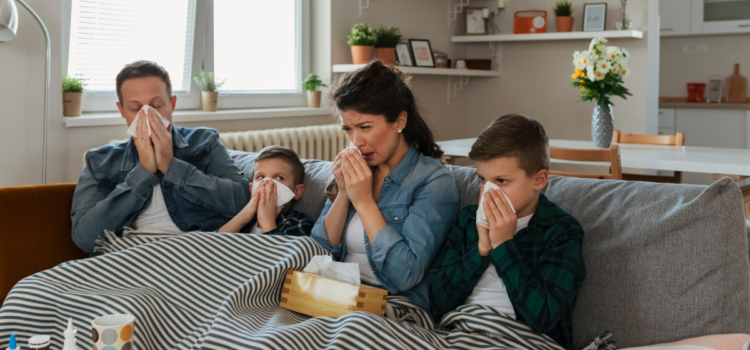
An increase in the number of cases of COVID-19, the flu, and respiratory syncytial virus (RSV) is prompting concern across California communities as threats of three coinciding epidemics — a “tripledemic” — are looming ahead of the upcoming holiday season.
“The data currently available shows that the rates of RSV are higher than normal for this time of year. In addition to the abnormally high levels of RSV, flu activity has been increasing and modeling is predicting a modest rise in COVID activity,” stated Michelle Corson, Program Manager/Public Relations Officer with the Kern County Public Health Services Department. “This results in three different illnesses circulating in the community, increasing the likelihood of somebody contracting one or more of these diseases.”
According to the California Communicable diseases Assessment Tool, the current daily cases of COVID-19 in Kern County is 32. That number is projected to increase to 72 daily cases by December 2.
While most cases of these three respiratory viruses are typically on the milder side, together they have the ability to be especially worrisome for infants and the elderly, as well as immunocompromised people and those who aren’t vaccinated; it could also put additional strain on the United States healthcare system.
It’s common for respiratory illnesses to rise during the colder months, but this year, flu and RSV cases began rising earlier than usual. While flu and RSV season usually peaked between December and February, the COVID-19 pandemic disrupted these patterns.
“Prior to 2020, seasonal patterns for RSV in the United States were very consistent. However, the patterns of circulation for RSV and other common respiratory viruses have been disrupted since the start of the COVID-19 pandemic early in 2020,” the Centers for Disease Control and Prevention (CDC) stated.
Experts have stated that the cause of this is most likely due to COVID-19 precautions that were taken to keep communities safe from more than just COVID-19. Masks, social distancing, and other measures have managed to keep other respiratory viruses low and, in the case of RSV, disrupted seasonal patterns.
Health officials are once again urging people to protect themselves against flu and COVID by getting vaccinated. But, in the case of RSV, dealing with it can be a little more complicated.
“The best protection against COVID and flu is vaccination. There is no vaccine for RSV currently. There are many non-pharmaceutical measures that can protect against RSV: covering coughs and sneezes, washing hands often, disinfecting frequently touched surfaces, and wearing a mask,” Corson stated when asked about how Kern County residents can protect their health.
Additional measures that can be taken to prevent contracting and spreading RSV include avoiding close contact such as kissing, shaking hands, and sharing cups and eating utensils with others.
The CDC has stated that RSV can cause more severe infections like bronchiolitis, an inflammation of the small airways in the lung, and pneumonia, an infection of the lungs. Additionally, RSV is the most common cause of bronchiolitis and pneumonia in children younger than 1 year of age.
RSV can spread when:
- An infected person coughs or sneezes
- You get virus droplets from a cough or sneeze in your eyes, nose, or mouth
- You have direct contact with the virus, like kissing the face of a child with RSV
- You touch a surface that has the virus on it, like a doorknob, and then touch your face before washing your hands
“People infected with RSV are usually contagious for three to eight days and may become contagious a day or two before they start showing signs of illness. However, some infants, and people with weakened immune systems, can continue to spread the virus even after they stop showing symptoms, for as long as 4 weeks. Children are often exposed to and infected with RSV outside the home, such as in school or childcare centers. They can then transmit the virus to other members of the family,” the CDC website stated.
People at the highest risk for severe disease include:
- Premature infants
- Young children with congenital (from birth) heart or chronic lung disease
- Young children with compromised (weakened) immune systems due to a medical condition or medical treatment
- Children with neuromuscular disorders
- Adults with compromised immune systems
- Older adults, especially those with underlying heart or lung disease